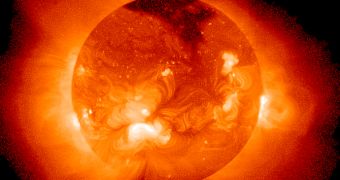Scientists working at the National Ignition Facility in California are said to have come one step closer to achieving self-sustaining nuclear fusion.
Thus, it appears that, last month, these researchers performed an experiment during which they managed to get more energy out of a fuel burn than was initially put into it.
As part of this experiment, the scientists fired 192 beams generated by the world's most powerful laser into a fairly small metal cylinder filled with hydrogen fuel.
The heated and compressed hydrogen fuel reportedly released more energy than it had absorbed.
According to RIA Novosti, the outcome of this experiment should be seen as a milestone in the quest to achieve self-sustaining nuclear fusion.
The same source details that, although getting more energy out of the hydrogen fuel than went into it is nothing if not impressive, what the scientists wish to do is figure out a way to get more energy out of the fuel that is consumed by the entire nuclear fusion machine.
More precisely, the fuel is expected to release more energy than the laser beams supply. This threshold is known to the scientific community as ignition.
For the time being, just 10-20% of the laser energy reaches the cylinder containing the hydrogen fuel. The remainder 90-80% is either used to heat the chamber, or gets lost. Therefore, there is no denying that there's quite a lot of work left to do.
Unlike nuclear fission, nuclear fusion does not break apart atoms, but fuses them together. Besides, it does not result in radioactive waste.
Scientists explain that nuclear fusion is basically the process that powers the sun. If successfully recreated in a laboratory, this process would provide us with limitless amounts of cheap and clean energy. Hence the fact that many refer to nuclear fusion as the “holy grail” of energy production.

 14 DAY TRIAL //
14 DAY TRIAL //